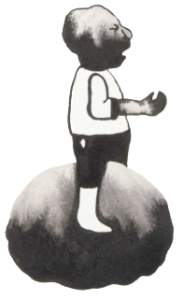Judgment of the Court of Appeal of Amsterdam of 4 May 2010 (Koelewijn c.s./SENA)
 The Neighbouring Rights Act (NRA) inter alia grants rights to performing artists and phonogram producers (for instance record companies) with regard to the exploitation – in brief: publication and reproduction – of their performances and phonograms, respectively (read: the first recording of sounds/music). With regard to a publication of a phonogram that has been released for commercial purposes, or a reproduction thereof, for instance playing a Madonna CD in a bar, this right concerns a right to payment. This means that (the reproduction of) the phonogram may be played without the rightholder’s consent, provided that a reasonable compensation is paid. This compensation is collected collectively and paid to the rightholders by the collective management organization SENA.
The Neighbouring Rights Act (NRA) inter alia grants rights to performing artists and phonogram producers (for instance record companies) with regard to the exploitation – in brief: publication and reproduction – of their performances and phonograms, respectively (read: the first recording of sounds/music). With regard to a publication of a phonogram that has been released for commercial purposes, or a reproduction thereof, for instance playing a Madonna CD in a bar, this right concerns a right to payment. This means that (the reproduction of) the phonogram may be played without the rightholder’s consent, provided that a reasonable compensation is paid. This compensation is collected collectively and paid to the rightholders by the collective management organization SENA.
The production of a music phonogram, on the basis of which music can be further reproduced and exploited by means of sound carriers (mostly CDs), is in practice as follows: a record company has artists perform the piece of music in the studio. Recordings are made of this performance, which occurs under the direction of a sound producer engaged by the record company.
The Dispute
This matter concerned various famous Dutch sound producers like Peter Koelewijn, Hans van Hemert, Jochem Fluitsma, Eric van Tijn, John Ewbank and others (“Koelewijn et al.”). Koelewijn et al. are of the view that they, being sound producers, can be regarded as phonogram producers, or as performing artists within the meaning of the NRA. In this capacity they argue that they can claim compensation from SENA. SENA, however, rejected this claim, which was a reason for Koelewijn et al. to summon SENA to appear before the Court of Amsterdam in 2008. The Court ruled that Koelewijn et al. did not qualify as phonogram producers and therefore rejected their claims in an interlocutory judgment. With respect to the question of whether sound producers are deemed to be performing artists, the Court considered in the (interlocutory) judgment that it wished to ask preliminary questions in this respect to the European Court of Justice. Koelewijn et al. have lodged an appeal against this – apparently appealable – interlocutory judgment. Unfortunately for them, they were also turned down by the Court of Appeal.
The Judgment of the Court of Appeal
Firstly, the Court of Appeal ruled that Koelewijn et al. did not qualify as phonogram producers, in the sense that a phonogram cannot be regarded as a product of the sound producer. This is not altered by the fact that the sound producer is the actual “creator” of the recording, as Koelewijn et al. have argued. What matters is who carries the investment risk that is connected to the recording of a record. This is exactly where the phonogram producers derive there neighbouring rights from, which must enable them to earn back the considerable costs required for the production of the phonogram.
According to the Court of Appeal, the investment risk referred to lies with the clients of the sound producers. After all, all costs for the production of the phonogram are borne by such clients. The record company pays the artists and makes a budget available to the sound producer, with which the recordings can be realized. Sound producers perform their work in this respect “only” by order of the record company, in return for which they receive a royalty over the record proceeds. The fact that with this remuneration structure the sound producers also take some financial risk, because in the event of disappointing record proceeds their investment of time can possibly not be ‘earned back’ entirely, is, according to the Court of Appeal, not sufficient to regard them as phonogram producers.
Where Koelewijn et al. operate purely as sound producers, in other words, separate from the activities that the sound producers may possibly perform as musicians or orchestral conductors, according to the Court of Appeal they are not performing artists either within the meaning of the NRA. The Court of Appeal pointed in this respect to the distinction that the NRA makes between the performance of a work and the recording of this performance. For instance, Article 2 (1) (a) of the NRA stipulates that the performing artist has the exclusive right to grant permission for the recording of his performance. This assumes that a performance does not coincide with the recording thereof, but is separate thereto and is also possible without these recordings, according to the Court of Appeal. The Court of Appeal therefore did not see how the sound producer, who is carrying out the recordings, can have the entitlement to the above-mentioned right of the performing artist. After all, there is no question of any performance the sound producer could give permission for being recorded.
According to the Court of Appeal, it is not relevant that sound producers, as Koelewijn et al. put forward, make a considerable artistic contribution to the sound that is eventually recorded. The Court of Appeal has assumed that this artistic contribution is already included in the protection that the NRA offers the phonogram producer. After all, at the time of the recognition of neighbouring rights for, inter alia, phonogram producers in the 1961 Rome Convention, the phonogram producer normally carried out the sound producer’s work himself. According to the Court of Appeal, this above-mentioned system is not altered by the fact that nowadays phonogram producers mostly outsource this work to external sound producers.
Koelewijn et al. have also pointed out to the Court of Appeal that their work as sound producers is comparable to that of the (stage) director, of whom it is assumed that he can actually derive protection from the NRA as a performing artist. The Court of Appeal did agree to this comparison, but this did not change its judgment. In this connection the Court of Appeal once again referred to the above-discussed distinction: the performance of a stage play is separated from the recording thereof.
Furthermore, the fact that the NRA did not give separate attention to the sound producer, supports the Court of Appeal in its opinion that the sound producer cannot derive any neighboring rights from this law.
Conclusion
After a battle for years and years for the recognition as rightholder under the Neighbouring Rights Act, the sound producers fall between two stools: they are neither regarded as phonogram producers, nor as performing artists. Therefore, the sound producers will have to (continue to) make do with the remuneration they receive from their clients.
With the judgment of the Court of Appeal of Amsterdam, for the time being the European Court of Justice does not have to examine the question, like the Court of Amsterdam intended to request, of whether sound producers as performing artists, let alone as phonogram producers, have neighbouring rights. It is a pity that this chance to get a definite answer in this respect at a European level has now passed. However, Koelewijn et al. can still appeal to the Supreme Court.

